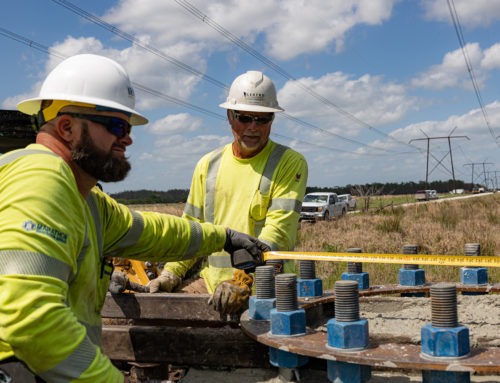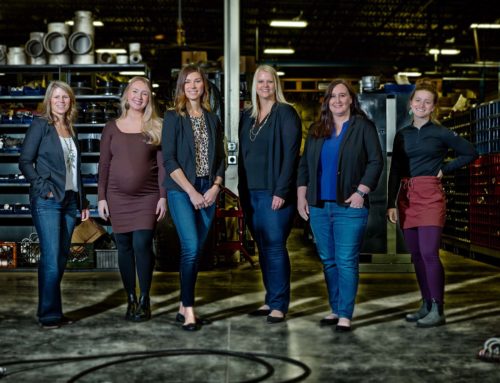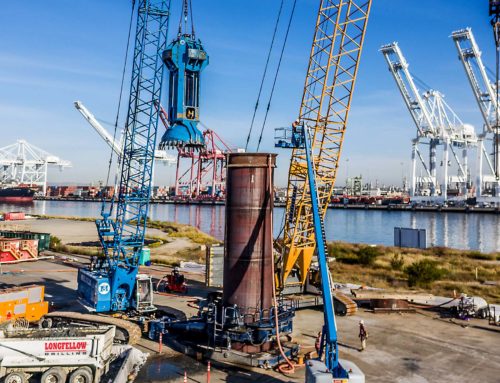Crux Subsurface Inc. rebuilt foundations for the historic Bonneville-Hood River Transmission Line through rugged terrain
Built between 1939 and 1941 as part of Franklin D. Roosevelt’s New Deal program, the Bonneville-Hood River Transmission Line emerged from the darkness of the Great Depression as a model of hope and progress in the height of the electrification of America. Since then, the line has been a trusted and critical conduit for delivering electricity to customers throughout the Pacific Northwest.
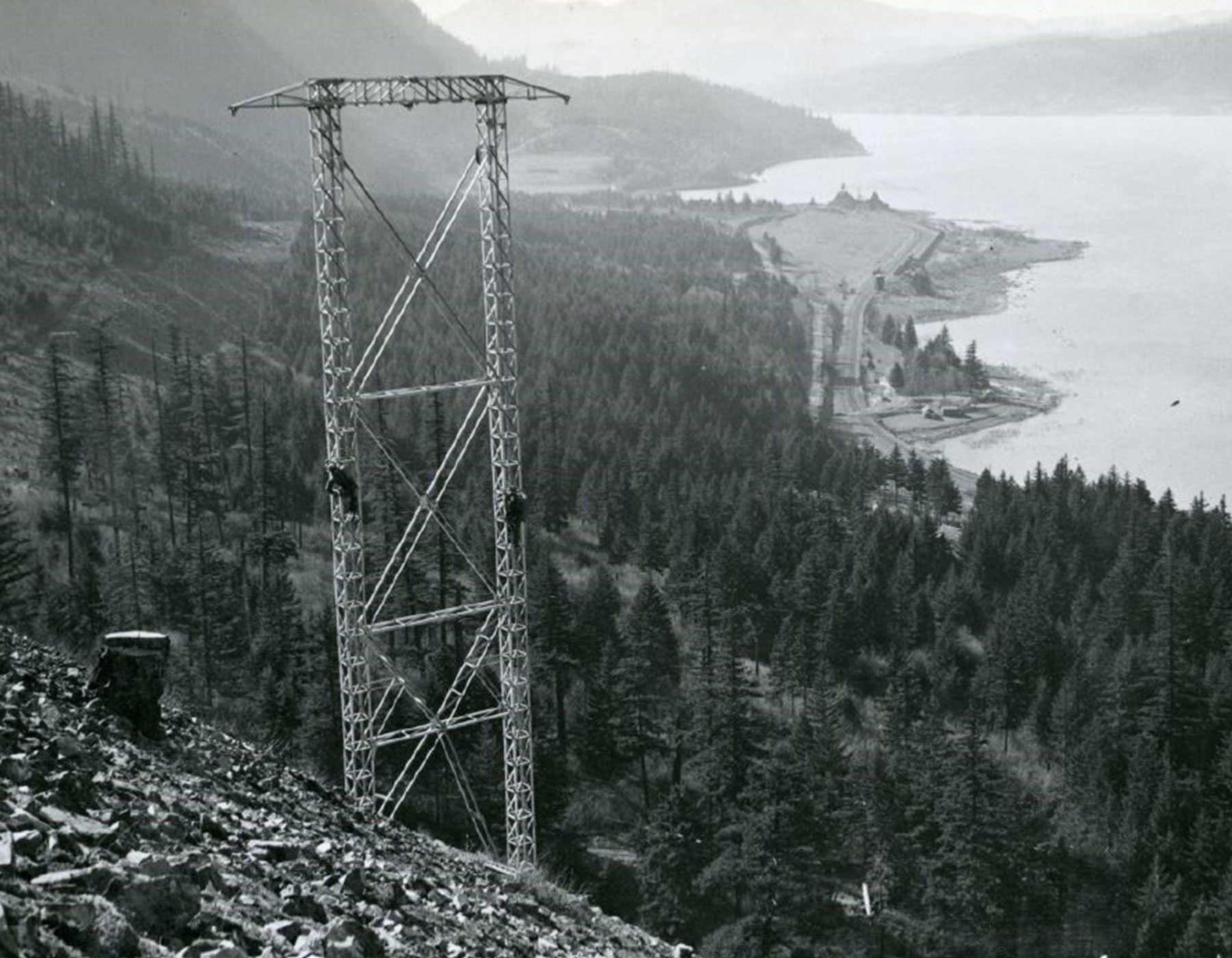
After 80 years of exposure to the area’s harsh elements and rugged terrain, however, the historic connection—which runs from the Bonneville Dam Powerhouse (located 40 miles east of Portland, Ore., in the Columbia River Gorge) all the way to Oregon’s Hood River—was in desperate need of an upgrade.
According to original project documents, the 22.6-mile, 115-kilovolt Bonneville PH1-Hood River No. 1 line begins at the Bonneville Dam and extends easterly to Bonneville Power Association’s Hood River Substation in Hood River. While some sections had been upgraded over the years, the aging line was in need of a formal rebuild to remain operational and effective. complicating the project’s feasibility, however, was the fact that the transmission line corridor, which includes the rugged Pacific Crest Trail, is marked by extremely challenging terrain and difficult-to-access structures.
Happily, Crux Subsurface Inc.—a Spokane Valley, Wash.-based integrated geostructural engineering and construction company known for combining innovative equipment and techniques to support some of the industry’s most demanding projects—was there to meet the challenge.
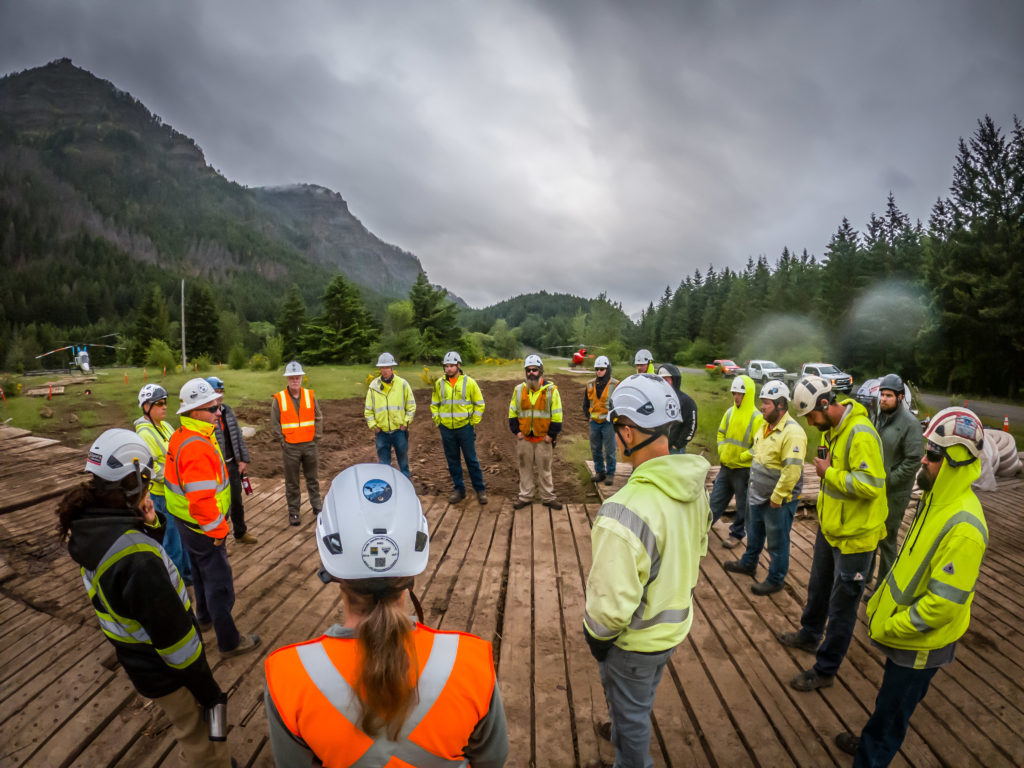
“Crux Subsurface is a geotechnical drilling, exploration, and construction company,” said Sydney McNeal, business development and marketing director for Crux Subsurface, part of the Quanta West group of companies. The company was founded in 1998 and employs more than 130 field specialists.
“Our roots are in geotechnical drilling, which entails providing core samples and subsurface data to assist our clients in planning for new and upgraded infrastructure. Specific to the electric power industry, we obtain this information to provide recommendations on appropriate foundation options,” she said.
“Our multidisciplinary team combines the expertise of structural and geotechnical engineers with experienced drillers, construction managers, geologists and program management specialists, allowing us to consistently provide accurate data and efficient, constructible foundation solutions to a variety of industries.”
McNeal confirmed that Crux Subsurface specializes in some of the continent’s most logistically difficult projects, many of which can only be accessed by helicopter because roadways by either foot or vehicle are either nonexistent or impassible.
“If you can’t drive a concrete truck to the site, that’s where we would come into play. Our rigs are componentized and lightweight to allow for efficient helicopter transport,” McNeal said.
The company expanded into foundation construction for electric transmission lines in 2004. Since then, “we operate in a niche within a niche and work all over North America. We’ve worked everywhere from protected wetlands in New Jersey to a volcanic mountain range in Oahu, Hawaii, environmentally-protected forest lands in California and several sites in Canada, and we just completed a large five-year project for a southern California utility,” she said.
Typically, Crux Subsurface works on five to eight major projects annually.
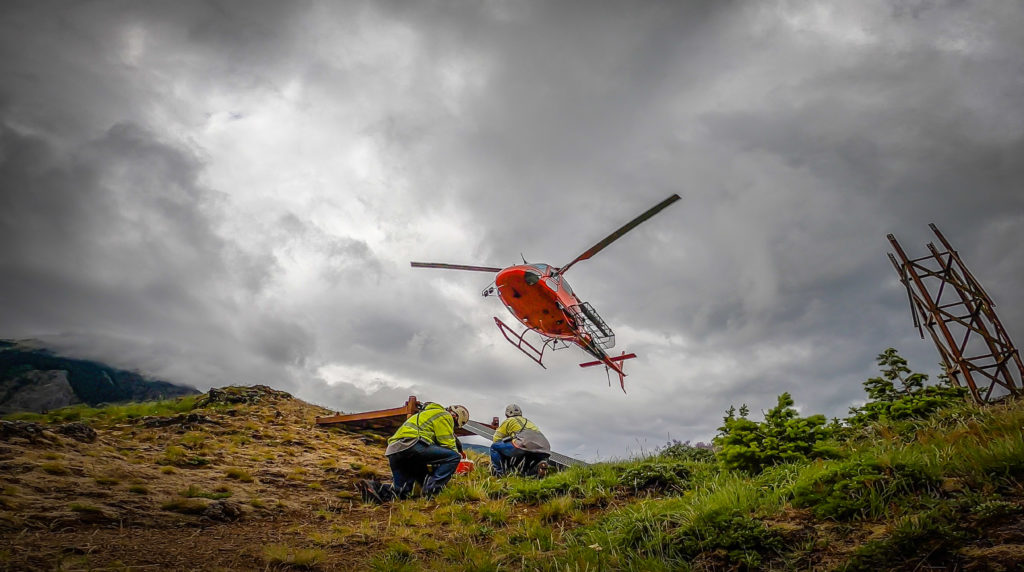
“For the Bonneville-Hood River Transmission Line project, Crux was a subcontractor to Canby, Ore.-based Wilson Construction Co., which specializes in all facets of electric distribution and transmission construction,” she said.
“We got the call from them requesting support on this project in late 2018/early 2019 when select sites were deemed to require helicopter-only construction methods with no drive-up access. The line was being supported by aging structures that were increasingly in need of replacement.”
Before starting, “Crux’s project manager and project geologist contracted a helicopter flyover of the alignment to get a better idea of the conditions and assist in developing our project plan,” McNeal said.
In February 2019, “we received the award to provide micropile foundation design and construction for replacement structures located in extremely steep, rocky terrain,” she said. “The alignment traverses challenging geotechnical conditions featuring talus rock—a large and sloping mass of coarse, angular rock fragments—and there was very little data available prior to construction.”
“One of [the] biggest issues with these types of alignments is that if it’s challenging to do construction, it will be hard to get in there beforehand to do geotechnical sampling. But micropiles are small-diameter drilled and grouted replacement piles that lend themselves to these situations,” McNeal said. “The foundations were installed in close proximity to the old structures; Wilson Construction then set new structures on the foundations and completed reconductoring activities.”
McNeal noted that these types of rebuilds don’t always require a one-for-one changeout from old to new structures.
“A number of things can change between original construction and a line upgrade—including safety requirements and desired capacity, among others—resulting in an increase or decrease in structure count,” she said.
Taking Flight
“We have a full in-house machine shop to modify our equipment and enhance its flexibility to accommodate access constraints and/or weight issues associated with helicopter limitations,” McNeal said. “For example, our custom-modified micropile drills are designed to be lightweight and componentized so that they can be broken down into efficient components for helicopter transport and then reassembled when we get to the job site. To transport them in, we first bring in leveling platforms that address uneven slopes, then transport in the drills, compressors and associated materials and equipment in subsequent trips.”
Because underground conditions can present many unknowns that result in costly and time-consuming change orders, McNeal said that it’s critical to collect as much geotechnical data as possible up-front.
“We do a full desktop study in advance using geologic maps and other resources,” she said. “In the case of the Bonneville-Hood River Transmission Line rebuild, the area contains a lot of talus rock, a foundation formed by gravitational falling, rolling or sliding, which can behave unpredictably underground and end up not being a bearing stratum.”
Ultimately, logging 600 helicopter-hours to successfully install 27 foundations, each of which incorporated four, six or eight micropiles, Crux completed the job in two phases, installing three foundations in 2019 (two for an H-frame structure and one for a monopole) and the remaining 24 monopole foundations in 2020.
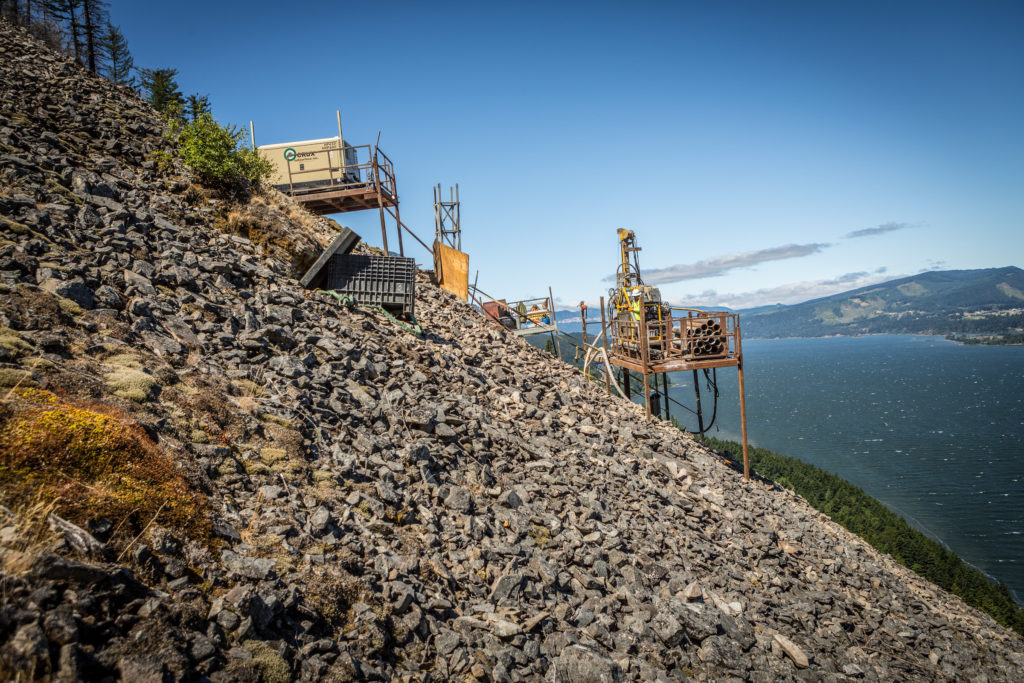
“There were typically three crew members per site, including a lead driller and two drill assistants, and they physically hiked into some of these sites to help minimize the number of helicopter trips we needed to make,” McNeal said.
McNeal said that enhanced safety precautions were required on the job, based on the steepness of the slopes and the difficulty of access. In response, the team included additional fall protection and guardrails on leveling platforms.
“Setting drill decks and platforms evenly in the talus rock was also highly challenging, and the unpredictable voids created challenges for both the drilling and grouting processes,” she said. “In addition, mid-summer heat and high winds periodically created dynamic weather conditions that shortened work windows.”
While she noted that one of Crux’s previous jobs was located in a part of southeast Alaska so remote that the company had to invest in a floating man-camp-type barge to house crew members for an extended time period, that extra step thankfully wasn’t necessary for the Bonneville-Hood Transmission Line rebuild.
“Our guys were working close to Hood River, and there are hotels in that area,” she said.
Driving Advancement
In a project that involved an elevated degree of planning, communication and risk, McNeal said that she and the Crux team couldn’t be happier with the results.
“We successfully completed the job on time, without any safety incidents and under a condensed time schedule due to various challenges,” she said. “This was the first project we’d ever done with the Bonneville Power Administration, and it’s since led to additional opportunities.”
“This was one of the steepest locations we’ve ever worked in, and the unpredictable ground/soil conditions added an additional layer of difficulty,” McNeal said. “To be able to complete the job successfully in light of those conditions and within a very tight timeline without having to go back to the drawing board showcases our team’s skill and the flexibility, adaptability and viability of micropiles. While drilled shafts are typically considered the most applicable foundation option in the industry, micropiles can be installed in everything from granite rock to wetlands and represent an exceptionally versatile and effective solution when specific project challenges are present.”
McNeal attributes the project’s success to Crux’s outstanding team of seasoned experts, strong teamwork with industry partners and the support received from Quanta West, “a parent company that enables us to operate with the resources of a large company while delivering the personalized services of a small company,” she said.
Ultimately, Crux Subsurface’s dedication to excellence and innovation may be its strongest attribute yet.
“We were the first to introduce the use of micropiles into the transmission arena, and have since worked to show others that this approach is effective,” McNeal said. “We have several patents pending in the area of micropile foundations for electrical infrastructure and we take pride in continuously contributing to advancement in the industry.”

